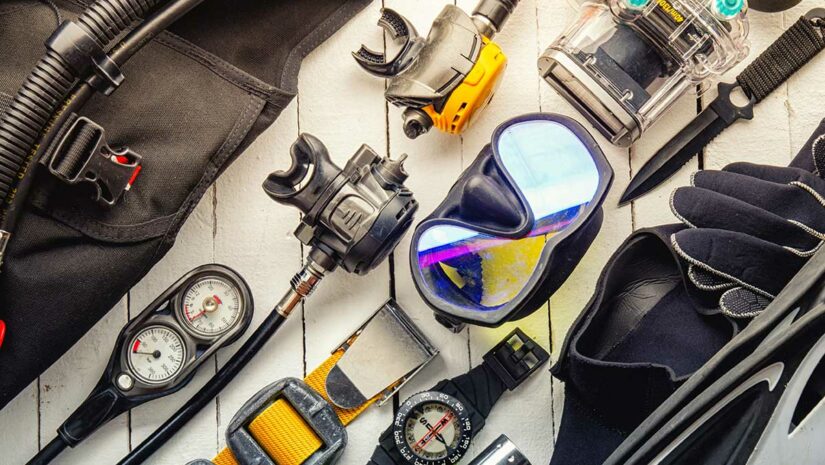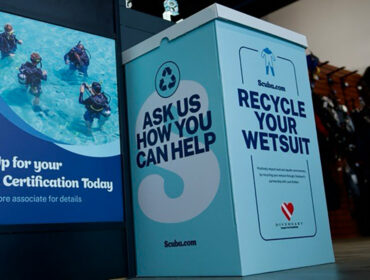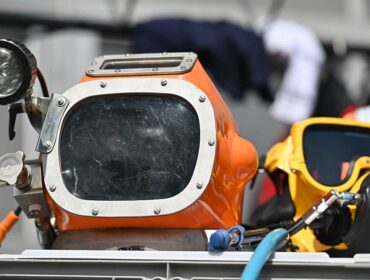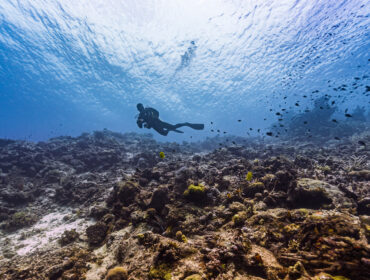Even the most prepared diver sometimes has equipment mishaps. Fin straps break, snorkels get lost, and masks fog up no matter how much toothpaste you have rubbed in. When issues like this come up on a dive boat, it is great to have a save-a-dive kit handy to supply you with a few spare items so that you don’t have to cancel your dives.
Here are our top essential items for a save-a-dive kit.
What is a save-a-dive kit?
So what is a save-a-dive kit? Well, it’s a prepared kit of spare equipment items that are most likely to break or get lost on a dive trip. Having this kit to-hand will give you peace of mind that you are prepared for almost anything. Bonus, you can help out your buddies if they need it, too! This small kit can be put together once and then you just have to remember to pop it in with your dive gear ready for your trip. You might never have to use it, but if you ever do, you’ll be happy you thought ahead!
What you need in a save-a-dive kit
Here are our top items for your save-a-dive kit:
Mask strap
Mask straps break all the time, and if you don’t have a spare mask on board, this could mean the end of your dive day. Unless of course, you have a spare strap in your save-a-dive kit! You can buy mask straps in all sorts of funky colors and patterns, and made from different materials. If you are worried about damaging your hair, you might want to choose a nylon mask strap that slides over your head easily. This is a must-have for your save-a-dive kit.
Fin strap
Fin straps sometimes break, too, or you might lose the buckle that the strap clips into. If you can’t secure your fin to your foot then it is definitely not safe to dive. Fins give us propulsion in the water and help us massively with movement. Depending on the style of fins you have, you can pack spare buckles, and/or a spare strap. This way you are prepared for breakage or lost fin straps.
Socks
Neoprene socks are always getting lost on dive trips. If your fins rub your feet and leave you with painful blisters, it could ruin your diving experiences. Carrying spare socks will ensure your feet stay protected.
Roll-up snorkel
You might not want to carry an extra long stiff snorkel with you, but if you’re worried you might lose your snorkel, you could buy an inexpensive, roll-up rubber snorkel to have as a spare. These snorkels roll into a circle and are very light, so they are very easy to travel with. Snorkels help us out massively in scuba diving when we are floating at the surface in big waves, or if we have to do a long surface swim.
Snorkel keeper
There’s nothing worse than losing your snorkel keeper (the little part that attaches your snorkel to your mask strap) and having to shove the snorkel under the mask strap instead. This can lead to the seal of the mask being broken and water might enter inside. Snorkel keepers are cheap and small, so they are the perfect addition to your save-a-dive kit.
Mouth piece
If you have been using your regulators for a long time, or if you are using rental regulators, the mouthpiece might be starting to break apart a little due to you (or others) biting down on it. These mouthpieces can be removed and replaced quite easily, so it can be handy to carry a spare one in your save-a-dive kit, just in case.
De-fogger
There is no point in being on a dive and not being able to see anything. Masks can fog up if they are quite new, or if there is a sudden drop in temperature. To be prepared, carry some de-fogger or baby shampoo in your save-a-dive kit so you can be sure you’ll be able to see clearly on the dive.
Camera battery
Have you ever been on a dive and seen so many incredible things you want to capture on camera, but suddenly your battery flashes “low”? It’s beyond frustrating. Avoid missing a single shot by having an extra, charged camera battery in your kit.
Hair ties
Long haired divers, this one’s for you. Long hair can become matted if it is not tied back before a dive. And using up a whole bottle of conditioner and teasing out the knots for hours is not a fun post-dive activity. Even if you always have a hair tie around your wrist, it’s good to pack a spare one in case it snaps or gets lost.
First aid kit
Cuts and scrapes are not unusual on dive trips, and you don’t want those cuts to get infected. A small first aid kit is enough to keep you safe and prepared on a diving vacation. You might want to include bandages, waterproof band aids, and antiseptic cream/spray.
Zipper wax
Dried-on salt can clog up the zippers of your wetsuit or dive bag. This can lead to you forcing the zip and breaking it. Zipper wax can be rubbed onto the salt-encrusted zips as a way of lubricating them and easing them open gently. Zipper wax is a smart choice for a save-a-dive kit addition.
How to pack your save-a-dive kit
These items should all fit into quite a small bag and placed at the bottom of your dive bag when you go on a trip. It’s a good idea to choose a waterproof bag to keep your items dry.
Conclusion
Even the most well-trained diver can experience the occasional bout of equipment failure. The many parts and pieces that make up your dive gear can suffer from regular wear and tear caused by exposure to the elements, as well as improper maintenance, or just plain bad luck. Packing these essentials for your save-a-dive kit can go a long way towards safeguarding against you having to call a dive because of a piece of malfunctioning equipment.






